Mushrooms are some of the most beloved and versatile foods in the world. From pizza toppings to risotto ingredients, mushrooms are a staple in many cuisines. In Arkansas, wild mushrooms have become a popular part of the state’s food culture.
With so many different types of mushrooms to be found in Arkansas forests, it’s no wonder why locals have embraced them as part of their culinary repertoire.
Common mushrooms in Arkansas include morels, cauliflower mushrooms, boletes, and turkey tails. Here is a comprehensive list of both edible and inedible fungi in this state starting with my all time favorite; morels.
List of Edible Mushrooms in Arkansas
1. Morels
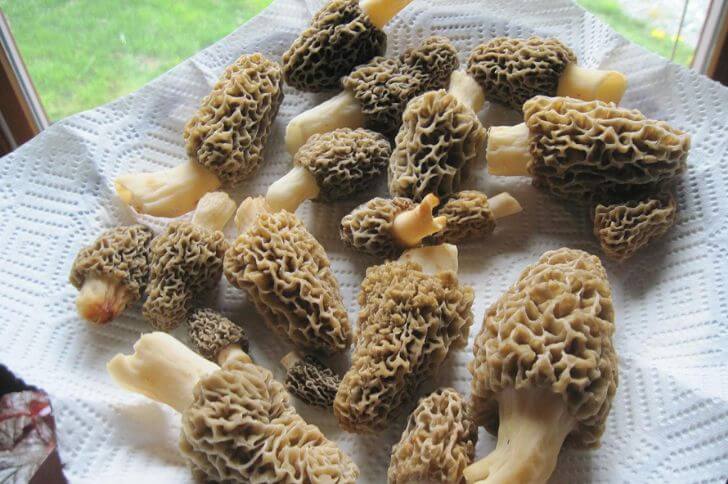
Morel mushrooms in Arkansas come in different shades. Here’s how to forage for them.
Varieties: There are two common varieties; yellow morels and black morels. Both varieties have textured surfaces that look like a honeycomb with ridges and pits. The colors range from light yellow to dark brown-black. Their stems are hollow.
Location: Check around oaks, ash, elms, and old apple orchards. Morels have been found in White county, Smith Creek Preserve, Fulton County, Lake Catherine State Park.
Season: These Arkansas mushrooms start popping out in Mid-March lasting through May. Peak is in April.
2. Shaggy Manes (Coprinus Comatus)
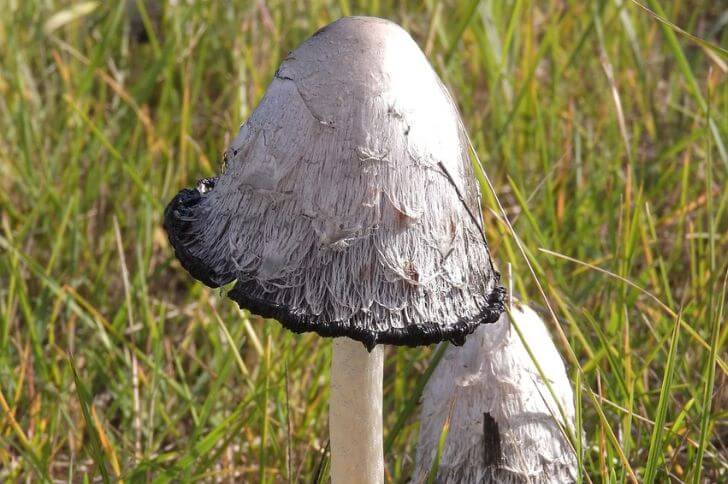
Shaggy manes are one of the most common white mushrooms in Arkansas. Also called lawyer’s wig mushroom, with no true look alike, identification is easy.
One of the key features is its tall, slender stature with white stems and caps that are covered in shaggy scales.
As the name suggests, this mushroom produces black ink-like droplets on its cap as it matures which can be used for writing or drawing. Another distinctive feature of shaggy mane is its gills which start off white but eventually turn black as they mature.
These white mushrooms are edible when young. You can have them fried or in soups.
3. Eastern Cauliflower (Sparassis spathulata)
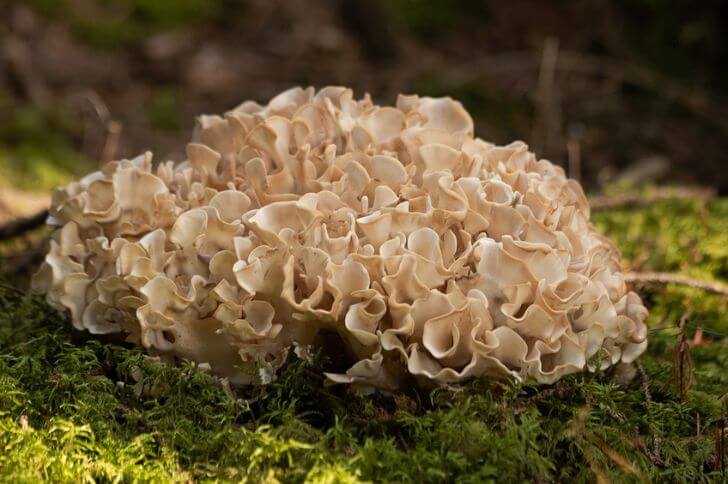
Eastern cauliflower mushrooms, scientific sparassis spathulata, are a popular choice for mushroom hunters. These mushrooms are found in the eastern regions including Arkansas and can often be identified by their unique appearance. The large, white to cream caps resemble cauliflower florets or even brain matter.
These species grow to 7.8 inches. Eastern cauliflowers grow under pines and oaks in summer and fall.
4. Shingled Hedgehog (Sarcodon imbricatus)
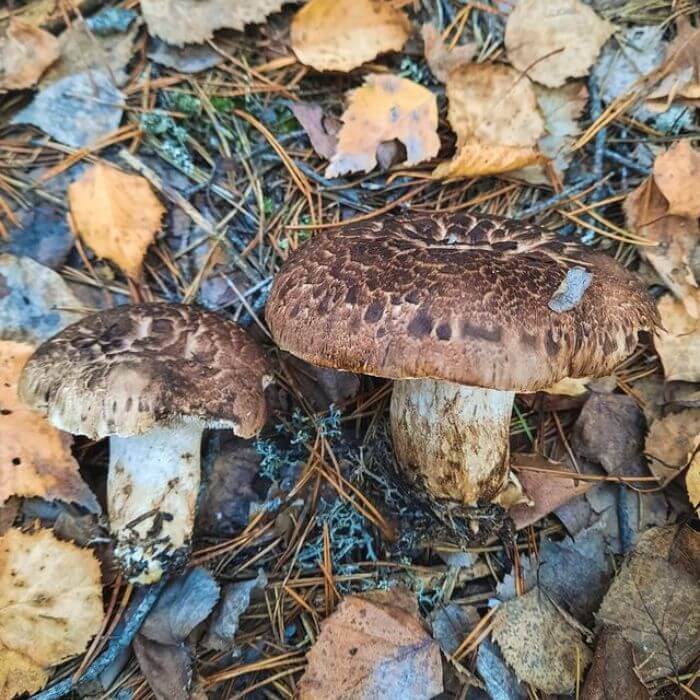
source: lusinkaklinka
When it comes to edible mushrooms in Arkansas, the shingled hedgehog does not top the list due to its bitter taste. However, with a little patience, you can turn this odd-looking mushroom to something palatable.
This fungus is often found in the company of conifers. The fruiting body has a distinctive appearance with overlapping brown scales on its cap. When cooking, we recommend you pick younger species. You can also boil to reduce the bitterness then pan fry them.
Related Read: Check Minnesota mushrooms
5. Ringless Honey Mushrooms (Desarmillaria caespitosa)
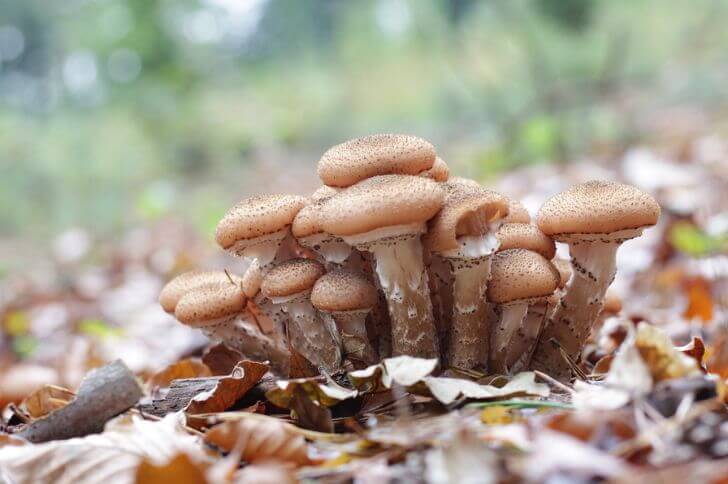
Ringless honey mushrooms belong to the honey mushroom family. Formerly known as Armillaria tabescens and renamed desarmillaria caespitosa, this unique species grows in large numbers and in very tight groups on stumps or base of poplars, almond and oak trees.
One key feature of this honey fungus is its cap, which ranges from yellowish to brown in color and can measure up to 1-4 inches diameter.
The cap surface also has small fibrils that give it a slightly fuzzy appearance. The gills on the underside of the cap are white or cream-colored when young, but become yellow as they age.
Note, unlike other honeys these do not have rings on the stalks which help tell them apart.
6. Chanterelles
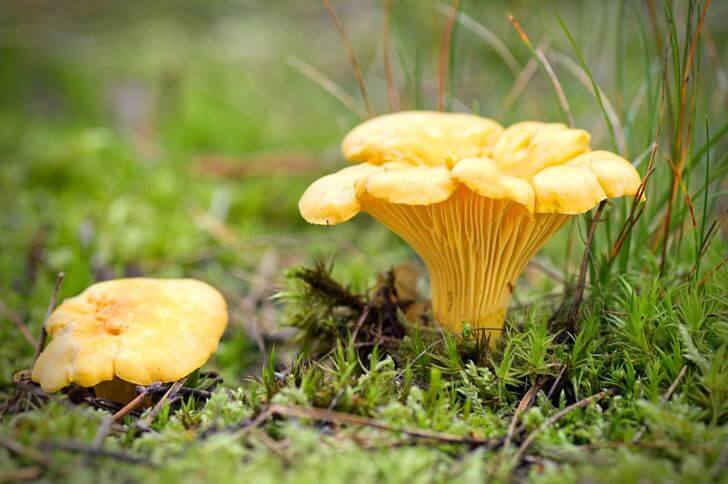
Are there chanterelles in Arkansas? Yes, this mushroom variety is common in The Natural State.
Cantharellus minor: These are the smallest chanterelles in Arkansas. The cap of cantharellus minor is smooth, funnel-shaped with a yellow-orange color. The false gills extend from the margin down the stalk.
Red chanterelles: These chanterelles have a deep red-orange cap that is thin with wrinkles. The cap can range from 1-5 inches in diameter and is usually funnel-shaped. The stem is short and stout.
Golden chanterelles: These mushrooms are easily identified by their vibrant yellow-orange color, funnel-shaped cap, and distinctive ridges or veins on the underside of the cap. Golden chanterelles have a meaty texture that makes them perfect for sautéing or grilling.
7. Peppery Milkcap (Lactifluus piperatus)
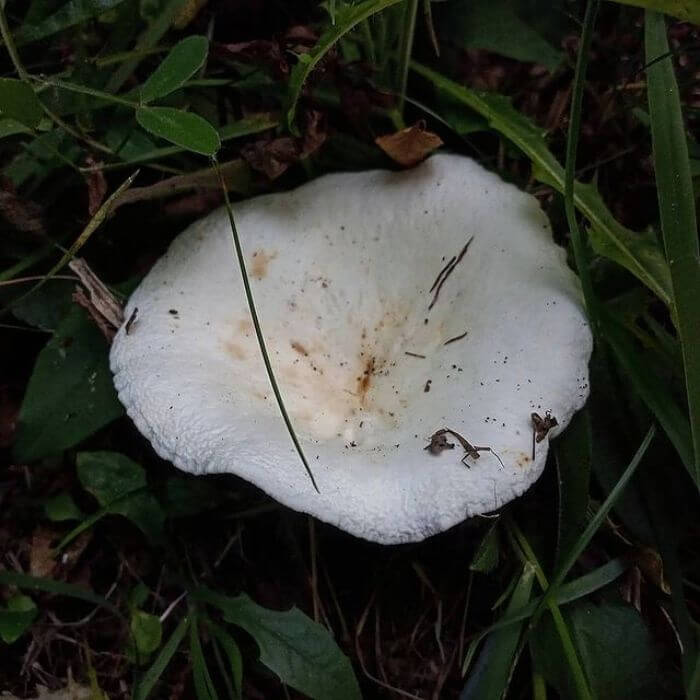
source: elenitafungosa
Peppery milkcaps are considered inedible in North America. But, in parts of Asia this all-white mushroom is considered edible.
It is a member of the russulaceae family. Its cap ranges from 2.5-6 in diameter and has a characteristic peppery taste.
Peppery milkcaps have all white fruiting bodies with broadly convex cap that become vase-shaped in maturity. When bruised or cut, these mushrooms produce a milk-like substance.
8. Pearl Oyster Mushroom
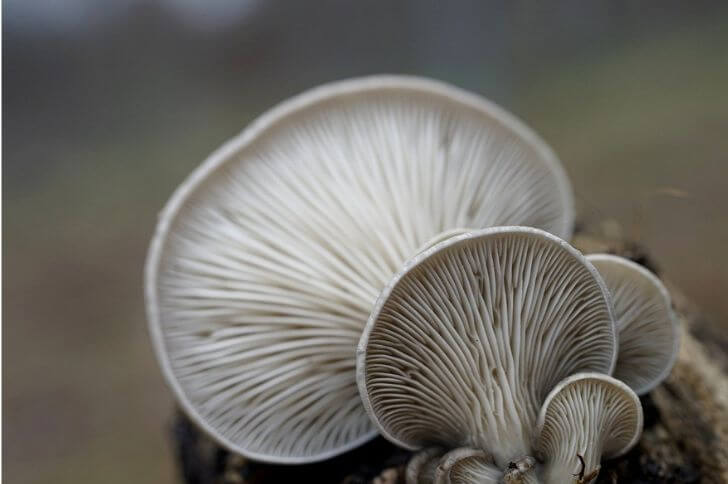
Pearl oysters are the most common oyster variety in AR. They have caps that are broad and fan-shaped, resembling the shell of an oyster.
The caps can grow up to 11 inches wide and come in white or grayish. Another key feature of this white mushroom is its gills. The gills are very close together.
If you are looking to start cultivating mushrooms, we recommend you start with oysters. You can go for the pink or blue variety.
9. Deer Mushroom (Pluteus cervinus)
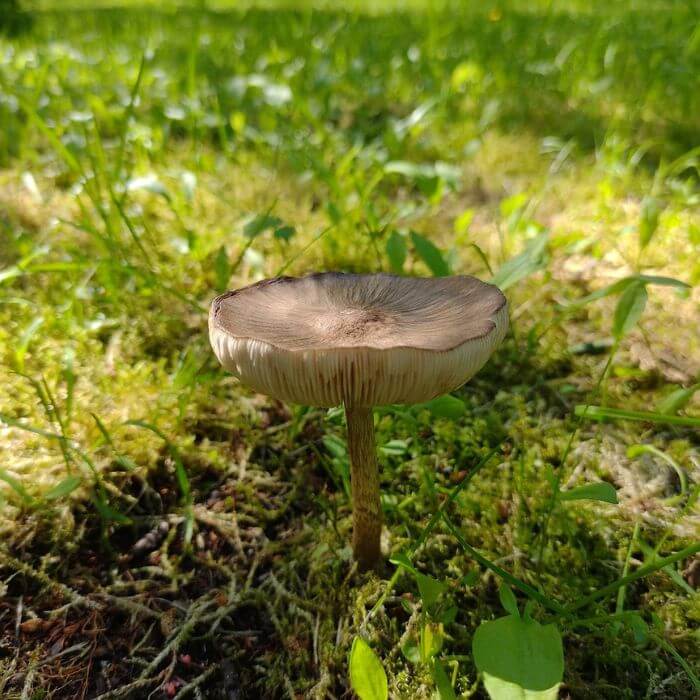
Deer mushrooms or fawn mushrooms belong to the Pluteaceae family. Their caps range from 2-4.75 inches in diameter and can be olive-brown or grayish in color with a smooth surface.
The gills, underneath, are packed closely and are initially white but turn pinkish-gray as they mature. The stem can grow up to 4.7 inches tall with a fibrous texture.
This mushroom has a radish-like taste which makes it suitable for use in various culinary dishes such as soups, sauces, stir-fries, and omelets.
10. Reishi (Ganoderma tsugae)
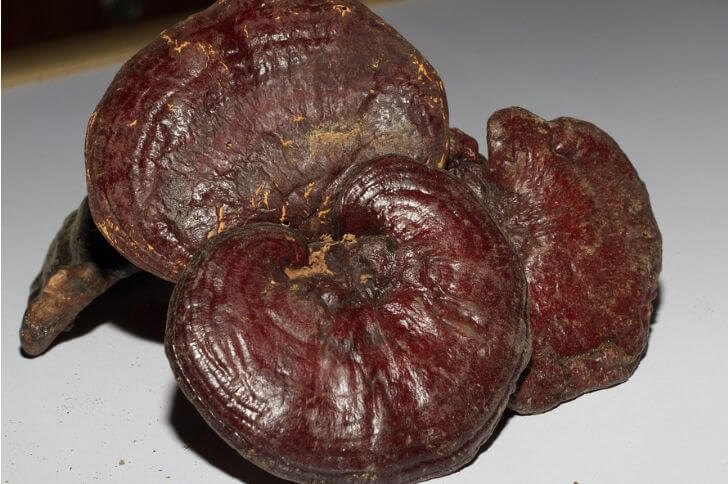
With the increasing popularity of reishi in North America, it is important to know how to properly identify them.
These polypores typically have a reddish-brown cap with a shiny surface and white pores underneath. Margin may be yellowish or white.
Where can you find reishi? They grow on stumps, wood and logs of hardwoods. Check for them in spring or fall.
When harvesting, go for younger species. Use a sharp knife to cut them off from their host. You can dry and use in smoothies.
11. Wood Ear
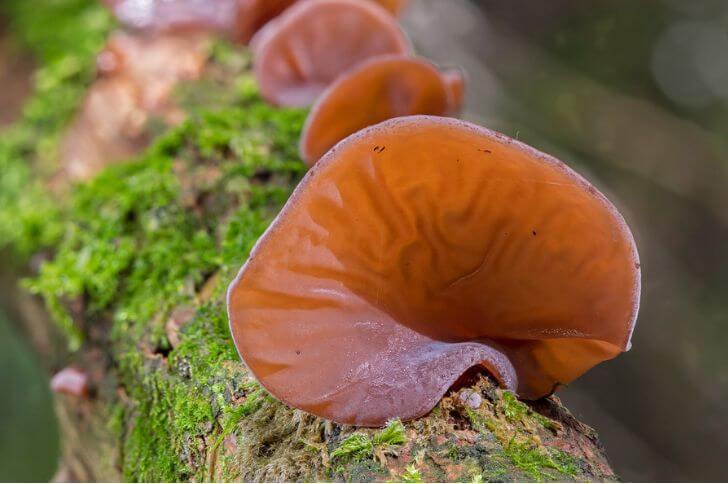
Would you eat wood ears? Also known as tree ears, they are a popular ingredient in many Asian cuisines. These mushrooms have a distinctive texture and flavor that makes them stand out.
One way to identify wood ears is by their shape and size. They typically have a thin, curved shape with irregular edges and can range in size from small to large.
The color of wood ears can vary from light brown to dark brown or black depending on their age.
Another way to identify wood ears is by their texture. When dried, they have a leathery texture that becomes soft when rehydrated. Fresh wood ears have a crunchy yet chewy texture.
What do tree ears taste like? They don’t have a particular taste but you’ll love their crunchy texture.
12. Old Man of the Woods (Strobilomyces floccopus)
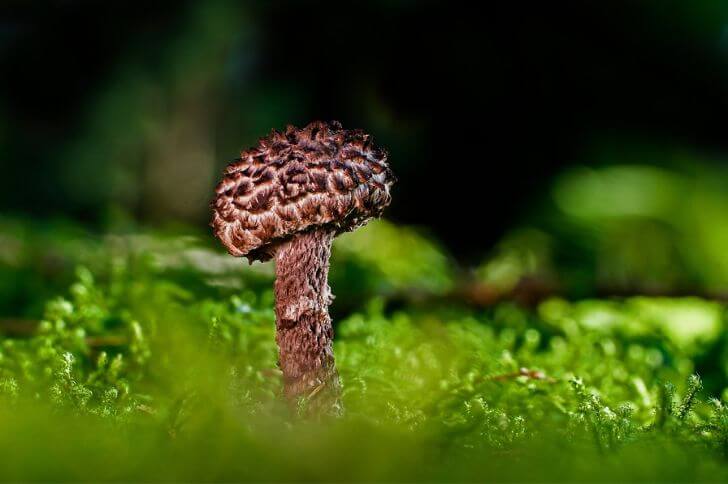
We are not sure how the old man of the woods got its name but one thing we are certain of is; it’s an odd looking mushroom.
This large mushroom is prominently scaly and wooly. Its fruiting body is a combo of white and grayish-black. This fungus grows to about 6 inches wide and 5 inches tall.
When foraging, look for them in mixed hardwood forests. They are a summer and fall fungus. Pick younger species.
13. Indigo Milk Cap (Lactarius indigo)
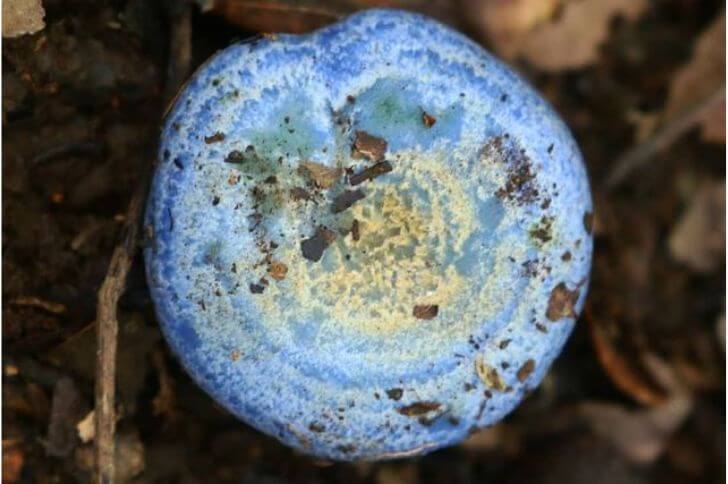
source: entre.aguas
Also known as the blue milk mushroom, the lactarius indigo or indigo milk cap is an unmistakable mushroom.
One significant factor in identifying this milky is its body’s color. The mushroom ranges from dark blue to pale bluish-gray, and it has an inrolled wavy edges. Its surface may have brownish patches as it ages.
Another crucial characteristic is its gills, which are crowded together and have a light bluish-gray color. because it exudes a bright blue milk when cut or broken. It turns green after exposure.
Like other milkcaps, the indigo milk cap has a peppery taste but not as peppery as the peppery milkcap. You can find them from June to November.
14. Bear’s Head Tooth Fungus (Hericium americanum)
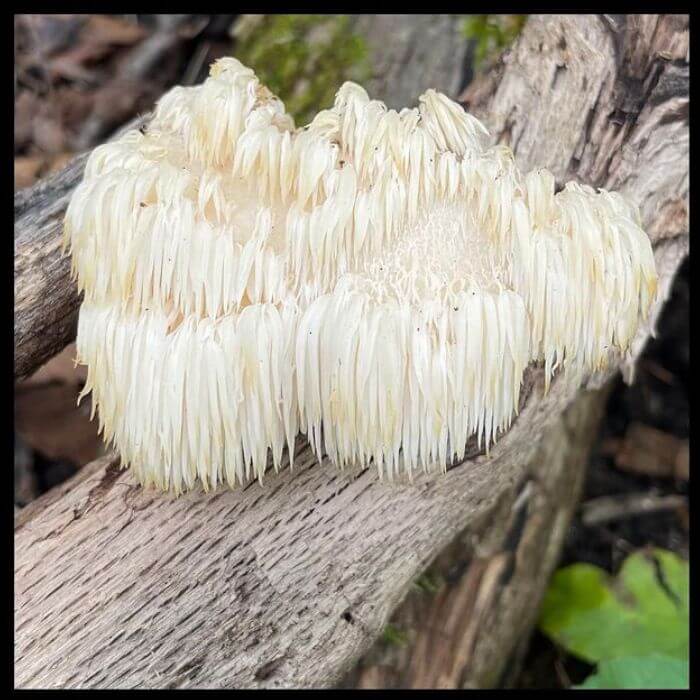
source: champignonsgatineau
With its unique appearance, the bear’s head tooth fungus can be easily identified by its white, shaggy spines that resemble the lion’s mane mushroom but longer.
The fruiting body of this white mushroom in Arkansas can grow up to 7.8 inches. Its shape can vary from round to irregular .
Secondly, the flesh of the mushroom is white and soft when young but becomes tougher with age. It has no discernible odor or taste.
Like lion’s mane, you can use them to make crab cakes, tacos and more.
Inedible Mushrooms of Arkansas
15. Eyelash Cup (Scutellinia scutellata)
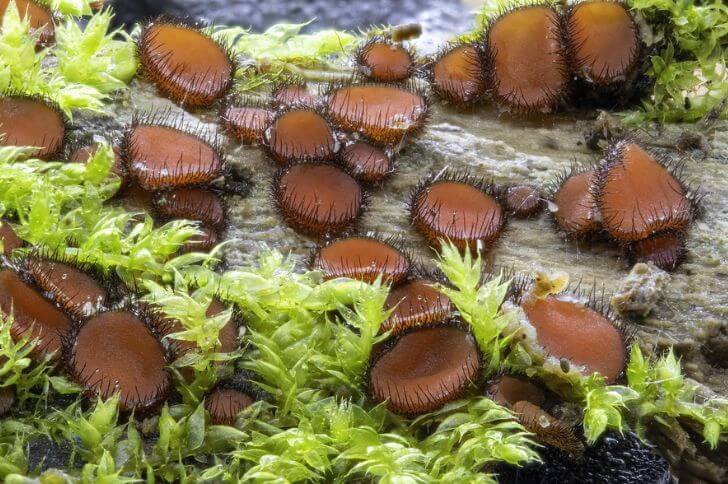
Eyelash cups are a type of orange-red fungus that have small, hair-like projections on their margins resembling eyelashes.
This unique feature makes them easily recognizable and distinguishable from other types of fungi.
Also called eyelash fungus or Molly eye-winker, eyelash cups can be found growing gregariously. They usually grow on dead or decaying wood. They are inedible.
16. Trichaptum Biforme
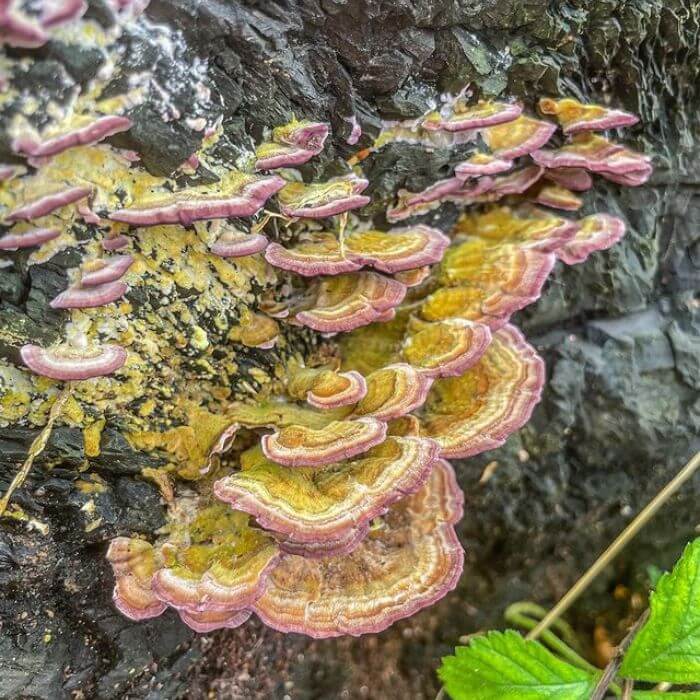
source: hiddenhickoryfarm
Trichaptum biforme is a common bracket fungus that belongs to the genus Trichaptum. The fruiting bodies have a distinctive fan shape, which makes them easy to identify.
The upper surface of the fruiting body has a smooth texture, while the lower surface is porous with tiny pores that are barely visible to the naked eye.
The color of the fruiting body varies from whitish to grayish, depending on its age, with a purple margin. These polypores are inedible.
17. Blushing Bracket (Daedaleopsis confragosa)
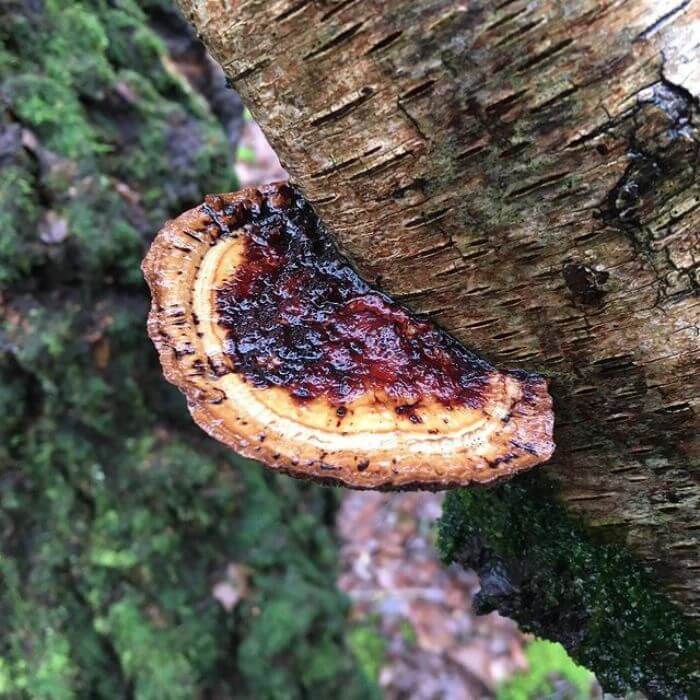
source: walkingpaceonly
Also called the thin-maze flat polypore, the blushing bracket is an Arkansas shelf fungus that you can find growing on decaying willows and birch trees.
It is a unique and fascinating species due to its thin and maze-like cap, which gives it its name. Its kidney-shaped cap is usually light brown or grayish-brown in color.
Underneath, the pores form different unique patterns ranging from maze-like to elongated to circular. Blushing brackets are inedible.
18. Orange mycena (Mycena leaiana)
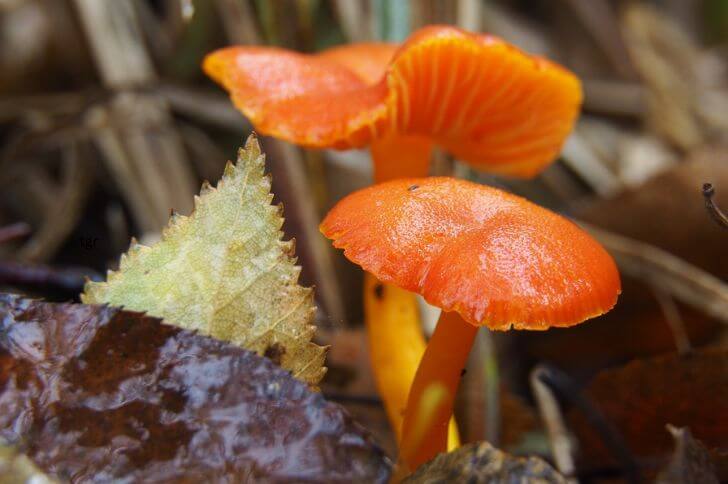
Orange mycena are one of the most common orange mushrooms of Arkansas. They are small, brightly colored mushrooms that grow in dense clusters in summer and fall.
They are known for their vibrant orange cap and slender stem, which make them easy to identify in the wild. Caps should also be convex at first, but will eventually flatten out as they mature.
Look closely at the gills underneath the cap – they should be close together and slightly attached to the stipe. Like other mycenas, orange mycenas are inedible.
19. Amanita Jacksonii
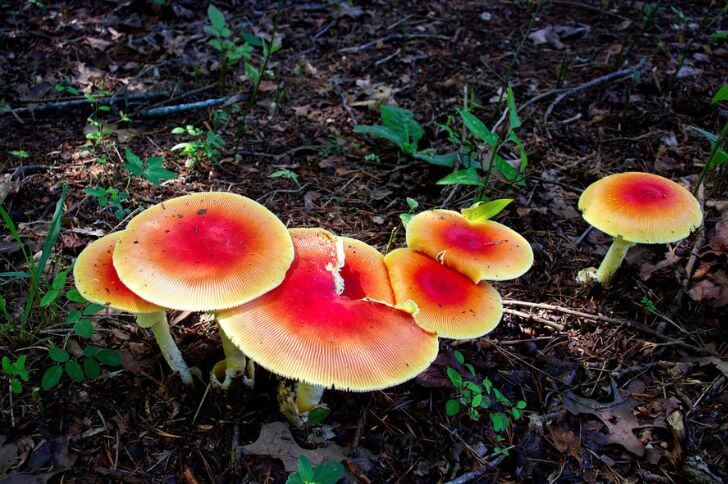
Amanita jacksonii are inedible. They belong to the amanitaceae family and are commonly known as the Jackson’s slender amanita.
The cap of Amanita jacksonii ranges from 3.2-4.7 inches in diameter and is usually orange-reddish with a noticeable yellow margin.
The gills are yellow-orange and free from attachment to the stem, while the stem itself has reddish fibers and can grow up to 5.9 inches tall. It also tends to have a ring and a sacklike volva on its base.
Amanita jacksonii are inedible.
20. Urnula craterium
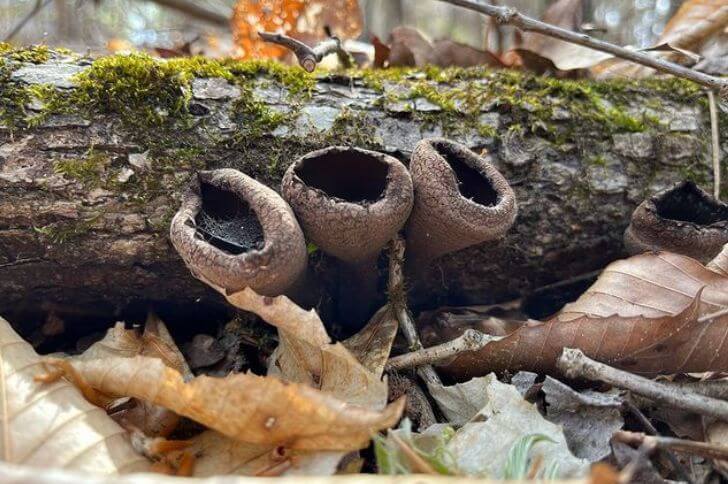
source: chasafulkerson
Devil’s urns are inedible but their unique appearance makes for beautiful photos. Scientifically known as urnula craterium, its striking appearance makes it a popular subject for nature enthusiasts and amateur mycologists alike.
One of the most notable features of the devil’s urn is its shape. It has a rounded or oval cap that resembles an urn.
The surface of the cap is dark brown with a smooth texture and the interior tends to be darker; almost black.
The stem of the Devil’s Urn is typically short and stubby compared to other mushrooms, making it look more like an egg perched on top of soil.
21. Carolina False Morels (Gyromitra caroliniana)
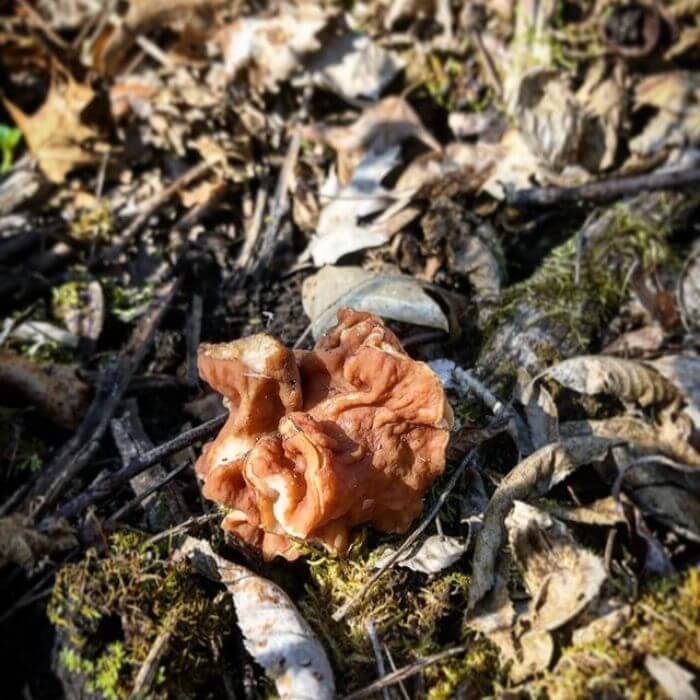
source: ceciliajeangold
Where true morels pop chances are false morels will also show up. The Carolina false morel is the most common morel lookalike in Arkansas.
This false morel variety has a unique appearance that sets it apart from other types of mushrooms. It has a brain-like shape with deep folds and wrinkles on its cap. The cap can range in color from light brown to dark brown.
The stem is usually white and has white-gray flesh when sliced open.
Conclusion
The diverse habitats of Arkansas make it an ideal location for mushrooms to thrive. With a little bit of patience, knowledge and practice, mushroom hunters can find a variety of edible species in the woods or fields.
It is also important to remember that not all wild mushrooms are edible. So be sure to have a professional identify any mushrooms you intend to consume before doing so.
sources:
Hi There,
My name is Jenny. I’m the Chief Editor at Try Green Recipes and besides making yummy and healthy foods for my kids, grandkids, and friends. I’m new to the blogging world but I believe what I have to share is unique and will bring joy to your home. If you are adventurous and want try something tasty, let’s get started.

